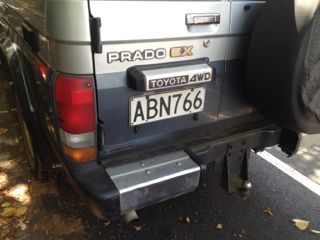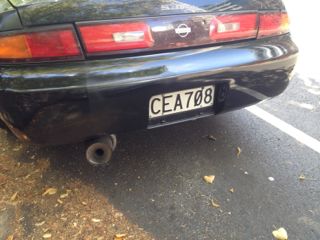Just in case you haven't seen the news, the Earth had two close encounters with space-rocks on February 15. A small asteroid 2012-DA14 whizzed past the earth, 30,000 km above the clouds, and an even smaller rock exploded above Lake Chebarkul -- the largest meteoroid to hit the earth in 100 years.
A day with a space rock is rare enough; a day with two space rocks is super-rare. Meg Urry (a former colleague of mine at Yale) did the numbers in a CNN Op-Ed -- meteorites like the one that hit Russia are once in a century events, but asteroids like 2012-DA14 show up about once a decade. There are 36,500 days in a century (ignoring leap years) so the chances of getting these two events on the same day is around 1 in 100,000,000 (36,500 x 3,650, after rounding).
But if you think about it, you see a huge number of rare events in a single day -- it is just that not all rare events are interesting events. And certainly not as interesting as this one:
Examples of rare-but-boring events are easy to find. Instead of looking at a dash-cam movie of an exploding space rock, you could have looked at the number plates of approaching cars, or a row of cars parked outside your office -- like these:
The last digits of these plates form the sequence 7-8-0-3-0-9-9-6-9-3-8-2-0. There are 10 trillion possible combinations of 13 integers -- so the odds of seeing that particular sequence of numbers are far lower than two asteroids having a close encounter with the earth on February 15th. But I didn't walk down the street thinking "7-8-0-3-0-9-9-6-9-3-8-2-0, wow what are the odds of that?"
In saying this, I am assuming any sequence of final digits is as likely as any other -- not a bad guess for cars parked on a busy street. On the other hand, these plates mostly start with letters from A to E, which would look odd if you didn't know that New Zealand issues number plates sequentially -- the distribution of first letters may be random, but it is not uniform. Or, what we learn is that these cars are mostly a few years old, but not ancient. (Cars bought in 2012 got plates starting with G)
So, how do we think about the 1 in a 100 million coincidence from February 15? Did the earth move through an asteroid field, like this one from Star Wars:
The Millennium Falcon enters the Hoth Asteroid field (image from http://starwars.wikia.com)
Unfortunately for this hypothesis, this week's rocks came from different directions in space and could not have been formation-flying around the sun. Asteroids can have moons, but if the Earth had a close encounter with a pair of asteroids they should be very close together -- the two events would be separated by seconds, not hours. (Sadly, asteroids only move round in big groups in the movies -- even if a group of asteroids like this formed in our solar system, it is unlikely to be a stable configuration.)
But some interesting events appear ordinary at first glance. Many geologists and stratigraphers looked at a thin band in columns of rock which marks the boundary between the Cetaceous and Paleogene eras.
[United States Geological Survey]
There are many bands, but the band in this photo turned out to be the signature of an asteroid - much bigger than either of this week's space rocks -- that collided with the Earth 66 million years ago, triggering a mass extinction.
So the challenge for science is to explain the things that need explaining, and to explain why we ignore the things that don't. And to have the wisdom to tell the difference.
















![[United States Geological Survey]](https://images.squarespace-cdn.com/content/v1/50fbc2d2e4b03aa4e2b5f7ac/1361403812586-2PN6UT5R0YB80WYG6JG7/K-T_boundary_at_Starkville_South.jpg)